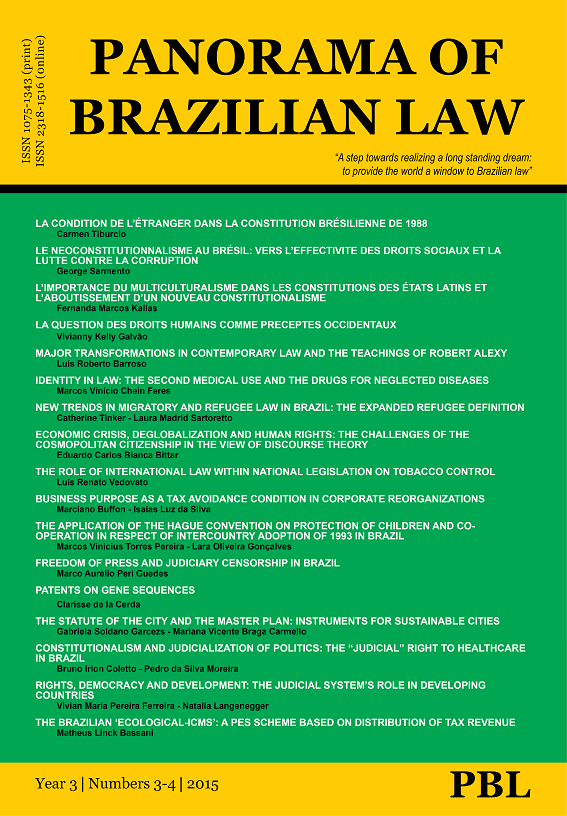BUSINESS PURPOSE AS A TAX AVOIDANCE CONDITION IN CORPORATE REORGANIZATIONS
DOI:
https://doi.org/10.17768/pbl.y3.n3-4.p222-253Abstract
With the approval of the general norm of tax avoidance in the national tax laws, there are several judgments of the Administrative Council of Tax Appeals – Conselho Administrativo de Recursos Fiscais (CARF), which have used a tax avoidance institute of comparative law to consider specific practices resulting from companies’ mergers, splits or amalgamation as abusive tax planning. It is known as the “business purpose doctrine”, which has been running the Counselours of the CARF to establish limits on the exercise of business activity, but still little discussed by the Brazilian doctrine. In summary, this new approach seeks to prevent that corporate transactions of this kind are carried out with the purpose of building a diverse legal reality of the factual, under the cover of legal formalism. The legality in corporate reorganizations focusing on the business purpose theory has been subject of compliance with three basic requirements: the temporality of business, the interdependence of the parties and the normality of the operation. In spite of the controversies regarding the legitimacy of the institute, it is noted that adopting a business purpose test seems plausible, once the institute is identified with the cause of the legal business.
Downloads
Pubblicato
Come citare
Fascicolo
Sezione
Licenza
Panorama of Brazilian Law employs Open Journal Access policies.
Authors are fully and exclusively responsible for their submissions.
Authors who publish with this journal agree to the following terms:
- Authors retain copyright and grant the journal right of first publication with the work simultaneously licensed under a Creative Commons Attribution-NonCommercial-ShareAlike 4.0 International License that allows others to share the work on a non-comercial basis with an acknowledgement of the work's authorship and initial publication in this journal and indicating if any changes were made. If you remix, transform, or build upon the material, you must distribute your contributions under the same license as the original.
- Authors are able to enter into separate, additional contractual arrangements for the non-exclusive distribution of the journal's published version of the work (e.g., post it to an institutional repository or publish it in a book), with an acknowledgement of its initial publication in this journal.

